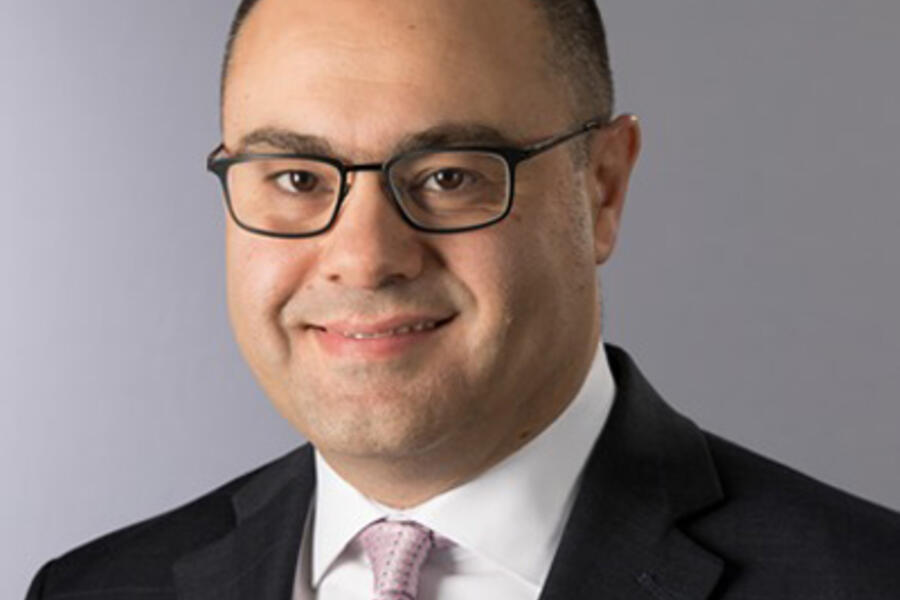Brain Stimulation
Scientist Explains with Dr. Tarek Rajji
March 31, 2022
What is brain stimulation?
Brain stimulation is a treatment approach that is delivered directly to the brain using a medical device. The use of brain stimulation is well-established for many conditions outside of dementia. For example, using repeated transcranial magnetic stimulation (rTMS) for depression, or deep brain stimulation (DBS) for tremors in Parkinson’s disease. There are an increasing number of studies testing the effects and safety of brain stimulation for people living with frontotemporal dementia, Alzheimer’s disease, language problems such as aphasia (disorder that impairs communication), mild cognitive impairment, late-life depression, as well as older adults without thinking or memory problems.
How does it work?
There are many different types of brain stimulation currently being studied in dementia, which all work slightly differently. Some of these include:
- Magnetic stimulation: In this approach, researchers apply magnets to the participants’ scalp. These magnets are thought to change the magnetic fields around the brain, which can then either increase or decrease the firing of brain cells (how much brain cells talk to each other). Examples of magnetic stimulation include repeated transcranial magnetic stimulation (rTMS) and magnetic seizure therapy (MST). rTMS can only affect parts of the brain that are closer to the scalp and cannot be focused to deeper areas of the brain. MST is similar to electroconvulsive therapy (ECT) in that it stimulates larger and deeper areas of the brain and causes small seizures, however with much fewer thinking- and memory- related side effects.
- Electrical stimulation with surface electrodes: In this approach, researchers apply patches directly to the scalp that deliver electrical impulses to the brain. These electrical impulses are thought to make it either more or less likely for brain cells to fire and communicate with each other. This can be helpful when combined with other treatments, as it “primes” the brain for these treatments and helps to make them more effective. Electrical stimulation with surface electrodes can affect deeper brain structures than rTMS but is less specific in terms of the areas of the brain that get stimulated. An example of this type of stimulation is transcranial direct current stimulation (tDCS).
- Electrical stimulation with implanted electrodes: In this approach, surgeons implant electrodes or rods into a specific part of the brain that deliver electrical impulses. This requires brain surgery and therefore is more invasive than other forms of brain stimulation. Electrical stimulation with implanted electrodes can be focused to a specific area of the brain based on where the electrodes are placed. An example of this type of stimulation is DBS, which has been approved for Parkinson’s disease tremors by Health Canada. There is a lot of ongoing research and promise for its use in Alzheimer’s disease.
- Focused ultrasound: In this approach, participants wear a helmet that delivers sound waves focused to a point that is only a few millimeters wide. This is being studied and applied in different ways for dementia:
- For blood-brain barrier opening: Once a contrast agent (a substance that contains tiny bubbles that can only be seen with a microscope) is injected into the bloodstream, focused ultrasound applied using the helmet can open the barrier between the blood vessels and the brain. This opening helps medications get into the brain more easily.
- For stimulation: Focused ultrasound is also being studied for its brain stimulating effects, which could be a potential treatment on its own for dementia. Using ultrasound waves, this technique is being investigated to stimulate deep structures in the brain in a precise manner which is usually not possible with electrical or magnetic stimulation.
In both cases, focused ultrasound is coupled with MRI brain scans to precisely target specific brain areas. This type of brain stimulation requires a shaved head, but it can reach deeper and smaller brain areas than the other approaches.
Why is it important?
Unlike medications that go to the whole body, all stimulation approaches target the brain where the treatments are needed.
What's happening in research?
Current studies are looking at how effective and safe these brain stimulation approaches are, both when given alone or with other interventions (e.g., mindfulness meditation, memory training, and rehabilitation). They are also aiming to see whether brain stimulation can improve thinking and memory problems and responsive behaviours that are often difficult to treat in people living with dementia.

